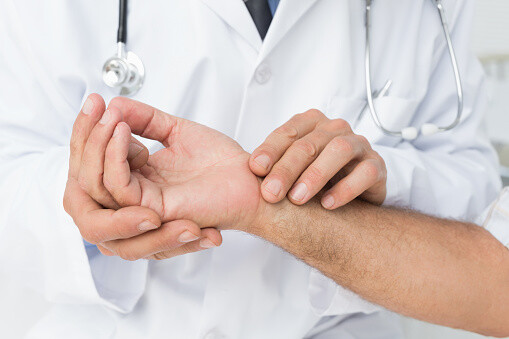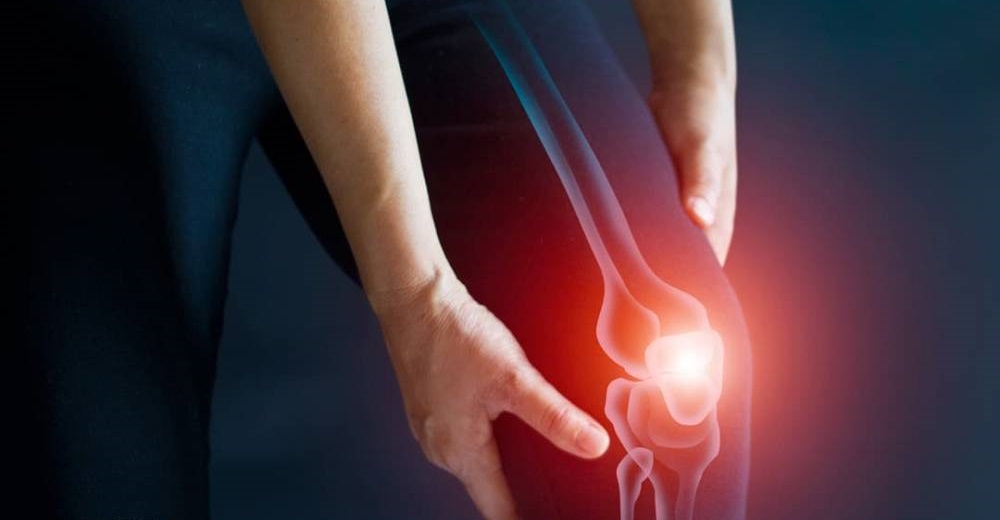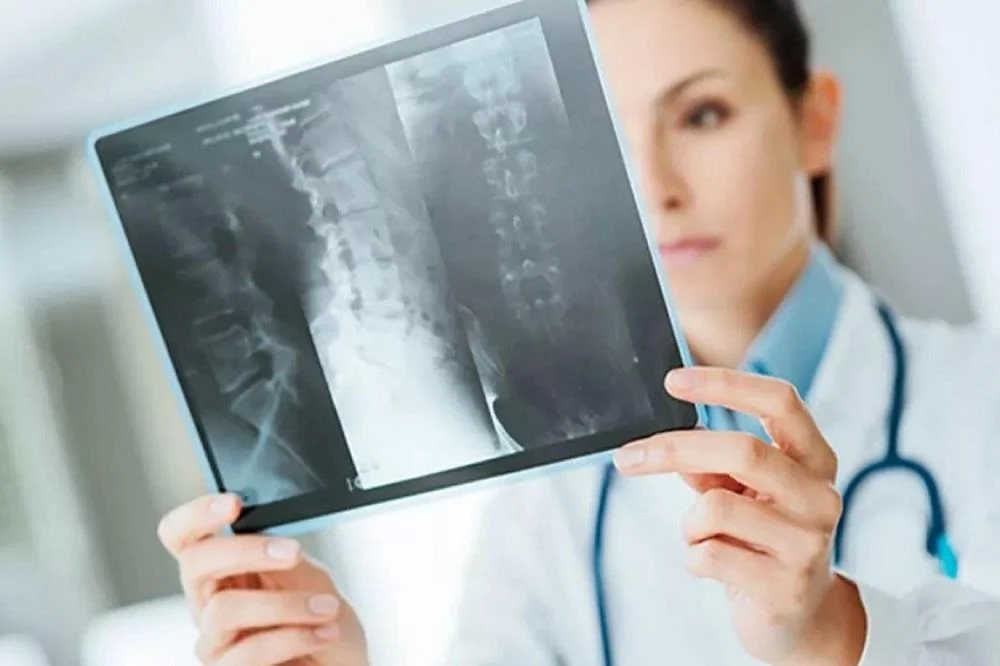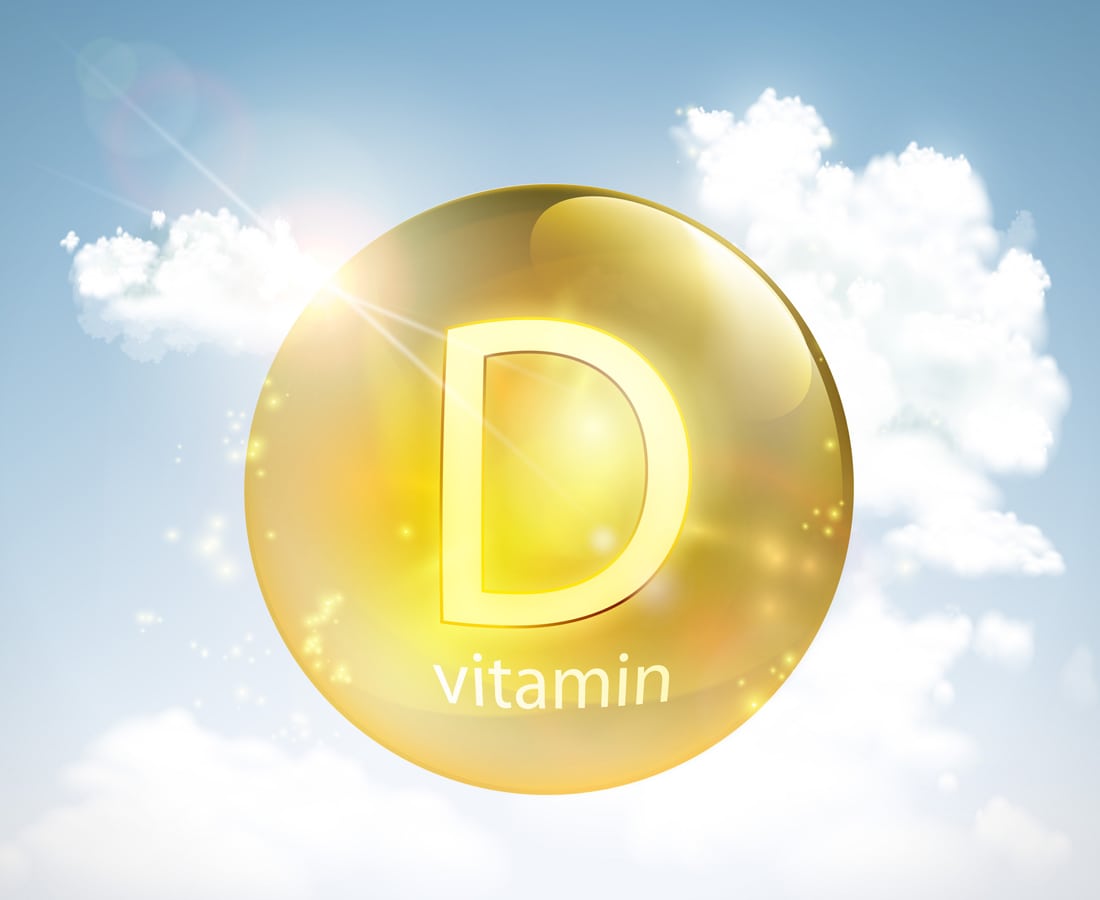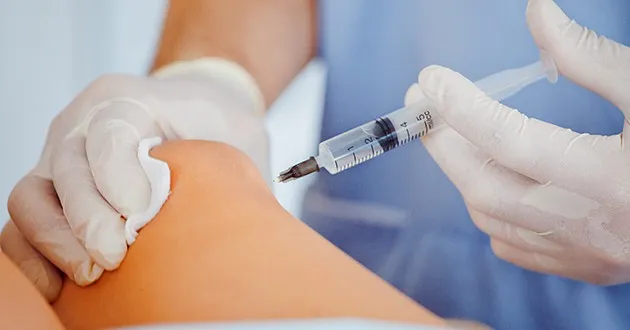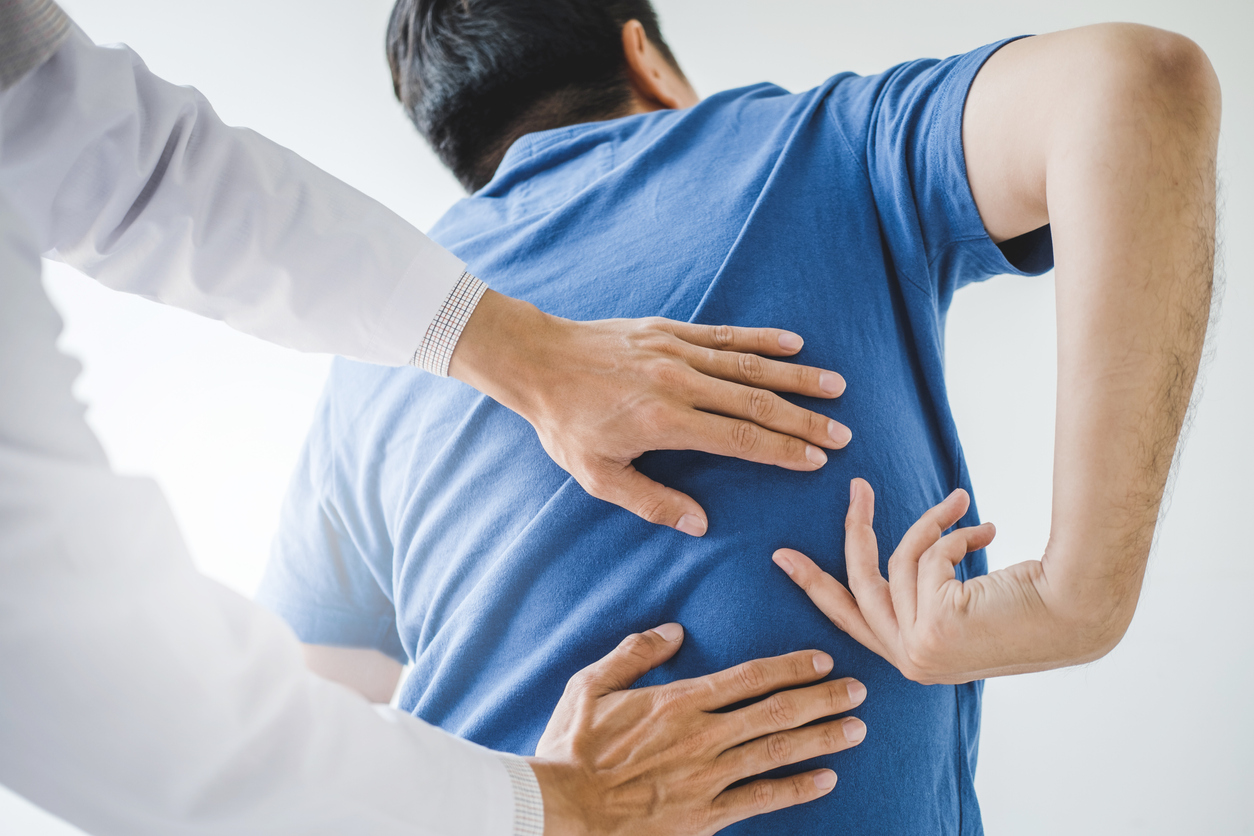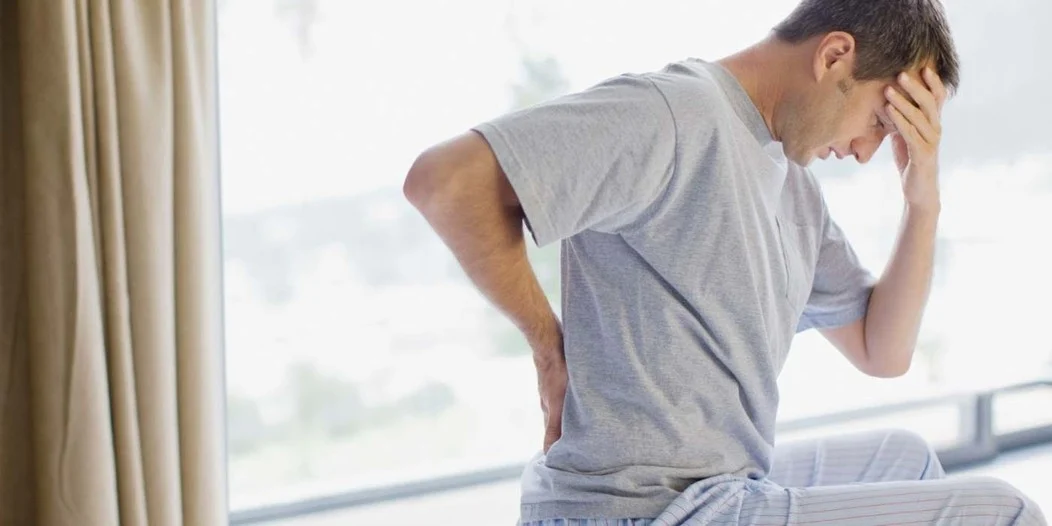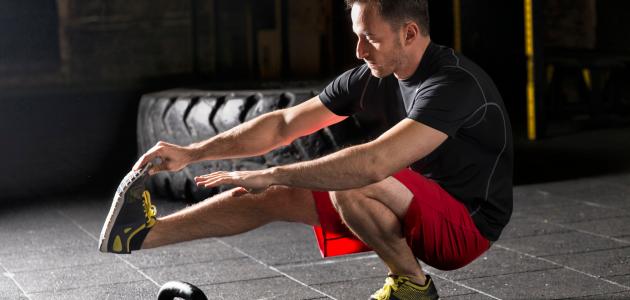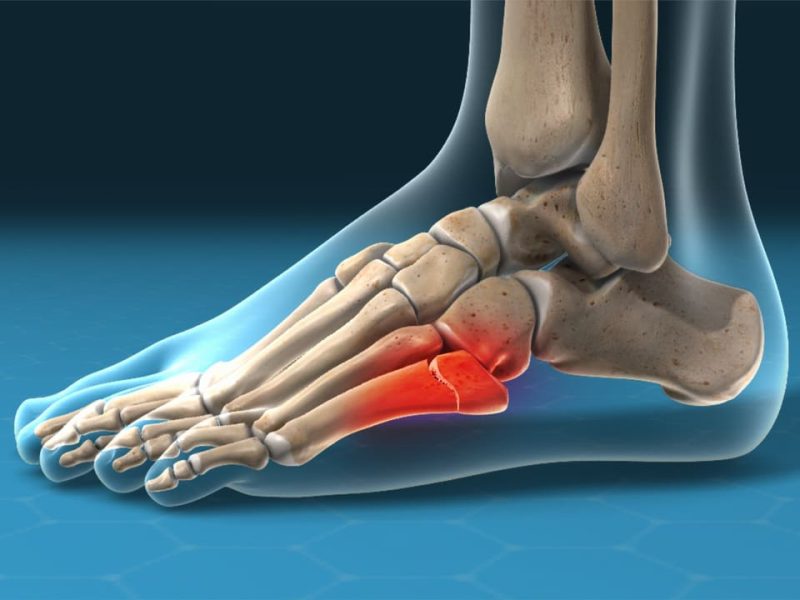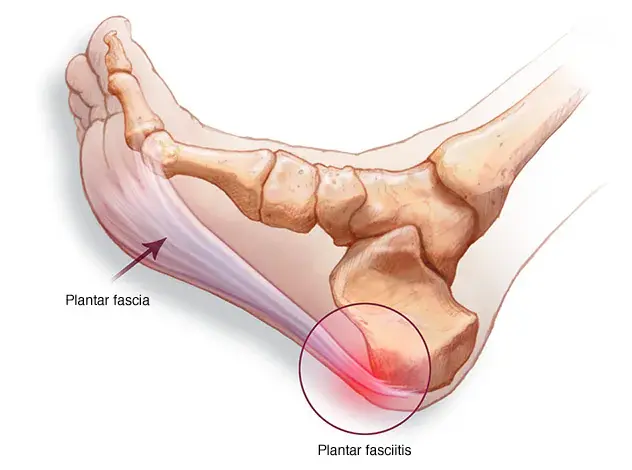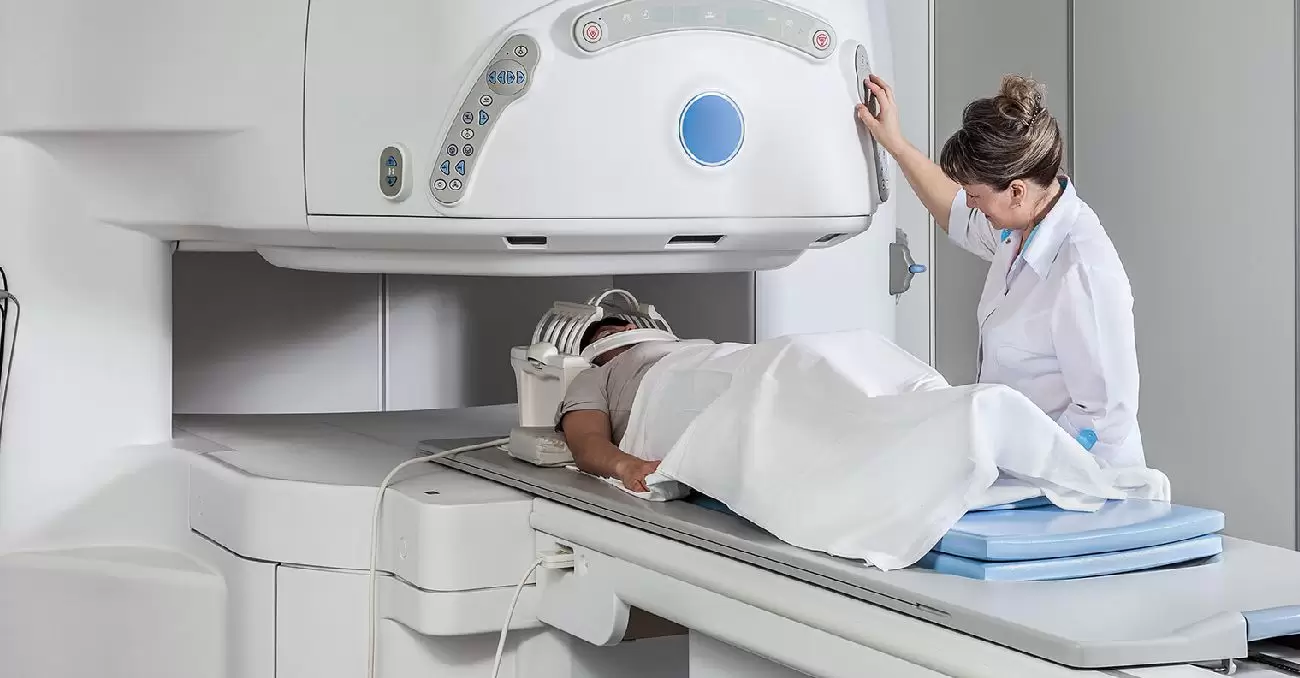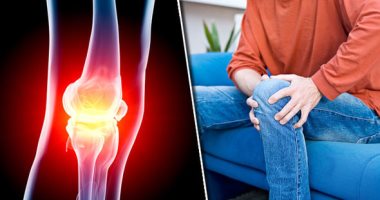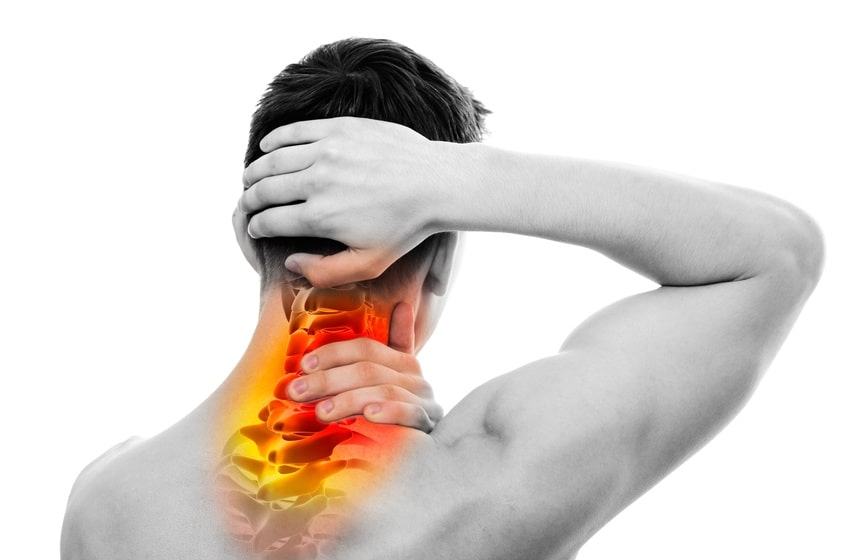What is the correct way to sleep for patients with disc herniation? And how can you get rid of lower back pain during sleep?
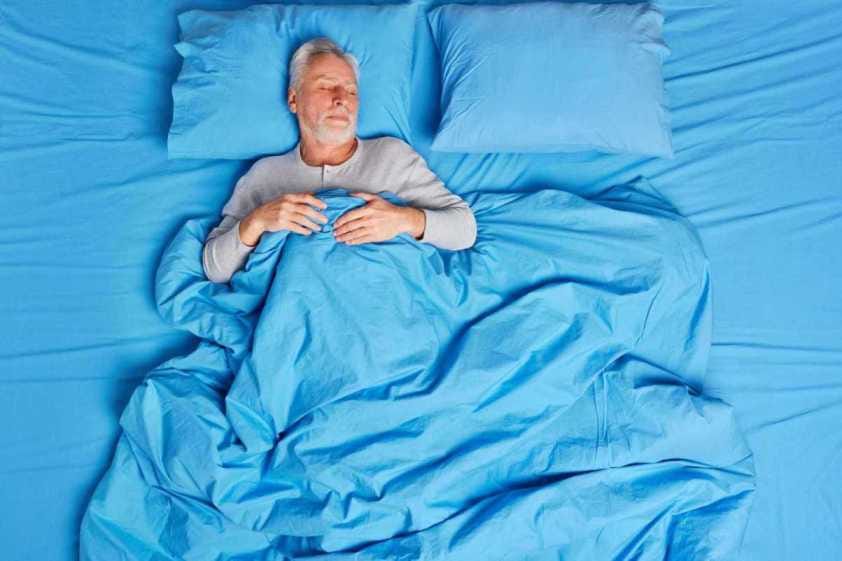
What is the correct way to sleep for patients with disc herniation?
Sleep is an essential part of human life, as it helps in restoring energy and physical and mental rejuvenation. However, some people may have difficulty sleeping due to health issues such as disc herniation. Disc herniation is a common problem that affects the spine and can cause pain and numbness in the back, neck, and lower limbs. Therefore, knowing the correct way to sleep for patients with disc issues can be very beneficial in alleviating symptoms and improving sleep quality.
One of the proper ways to sleep for patients with disc issues is to sleep on the back with the upper body elevated. This can be achieved by placing a medium-sized pillow under the head and another pillow under the knees for support. This sleeping position is considered good as it helps to reduce pressure on the spine and improves weight distribution across the body.
In addition to sleeping on the back, disc patients can sleep on either side. However, they should regularly switch sides to balance the muscles on both sides. A pillow can be placed in the gap under the neck to provide proper support. The side or back sleeping position is best for the neck, and it is important to use a pillow that can properly support the neck.
As for the bedding, it should be medium in firmness and preferably made of wood rather than spring. A pillow can be placed under the head and another under the legs to bend the knees, and if the person prefers to sleep on the side, they can bend their knees and place a pillow between them for the necessary support.
Doctors generally recommend that patients with disc herniation sleep on their back with a pillow under their knees. Sleeping on one side is also an acceptable option. Lying on the back and placing a pillow or cushion under the head and knees is one of the best sleeping methods for patients with disc herniation or lower back pain in general.
In conclusion, patients with disc issues should consult with specialized doctors to determine the optimal sleeping position based on their individual health condition. They should also follow the recommended rest and exercise tips to strengthen the muscles and improve the flexibility of the spine.
Is Sitting Dangerous for Disc Herniation Patients?
Disc herniation is a common condition that many people around the world suffer from. It occurs when the intervertebral disc, located between the back vertebrae, becomes bulged and presses on the spinal nerves. Among the factors that increase the risk of disc herniation are sitting in incorrect postures.
When we sit in the wrong posture for long periods, we put pressure on the cartilage and joints of the spine, negatively affecting the back and exposing it to the risk of the following problems. We must avoid sitting at a right angle or sitting incorrectly while working, and we can do that by placing a cushion under the lower back and pressing on it during long sitting periods or while driving.
Moreover, we should not lean our necks forward for long periods, as exposure to a strong direct hit in the neck can lead to tearing or disc herniation. Therefore, it is advised to avoid standing for long periods and lifting heavy objects incorrectly.
One important thing to consider is that sitting for long periods in the wrong posture leads to increased pressure on the spine and surrounding nerves. These pressures negatively affect back health and increase the risk of disc herniation.
Furthermore, Lumbar Disc Herniation is common among people suffering from degenerative spinal conditions. Therefore, we should avoid sitting for extended periods without breaks and follow correct postures when sitting.
Overall, it can be said that sitting in incorrect postures for long periods increases the risk of disc herniation. Hence, we must take necessary precautions, commit to proper sitting postures, avoid standing for long periods, and lifting heavy objects incorrectly. It is also recommended to practice appropriate physical exercises to strengthen back muscles and maintain spinal health.
Is Walking Beneficial for Disc Herniation Patients?
Walking is an aerobic activity considered one of the best sports that help improve overall human health, but is it also beneficial for disc herniation patients? Real-world data indicates that aerobic activities, especially walking, can help relieve disc herniation pain and promote recovery.
One of the main benefits of walking for disc herniation patients is improving blood circulation to the cartilage. When muscles are activated during walking, blood flow increases, and muscles and cartilage are better nourished. Additionally, the flowing blood carries anti-inflammatory elements, which helps reduce inflammation and speed up the healing process.
Exercise also enhances physical activity and strengthens the back muscles, which is very important for patients with disc herniation. When muscles are strong, they can better support the spine and reduce the pressure on the damaged intervertebral discs. Therefore, walking can be an effective exercise for strengthening the muscles and improving spinal alignment.
In addition to the physical benefits, walking can improve the psychological state of patients with disc herniation. Physical activity helps increase blood flow throughout the body, thereby transporting oxygen and nutrients needed for the healing process and cell regeneration. It is known that improving the psychological state can help enhance pain endurance and reduce the depression and anxiety associated with the disease.
Based on this, it can be said that walking is a beneficial exercise for patients with disc herniation, as it helps them regain their activity and improve their physical and psychological condition. However, patients should take some precautions before starting to exercise and consult their doctor to determine the most suitable activity for their health condition.
In conclusion, walking is a beneficial sports activity for patients with disc herniation, as it helps them improve their health condition, alleviate pain, and promote recovery. Therefore, patients can practice the sports they were engaged in before the injury, but with the condition of observing the previous requirements and being careful not to overstrain the affected spine.
Does massage benefit disc herniation?
Massage is one of the oldest traditional treatment methods used to relieve back pain and other muscular and skeletal problems. One of these skeletal issues that many people suffer from is disc herniation, which can be a source of acute and persistent back pain. Therefore, the question arises: Does massage benefit disc herniation?
The answer to this question depends on several factors, including the type and severity of disc herniation, the patient’s condition, and personal preferences. Massage is considered an effective way to relieve pain and improve overall comfort for people with disc herniation in some cases. Here are some potential benefits of massage in the case of disc herniation:
Relief of tense muscles: Massage can help relieve tension and muscular knots surrounding the area affected by disc herniation, which helps improve muscle flexibility and increase the range of motion. Increased blood flow: Massage works to increase blood flow to the concerned areas, which can enhance the provision of nutrients and oxygen to the damaged tissues and aid in their healing. Improved comfort: Massage can help improve the overall comfort of a person with a disc herniation by relieving pain and pressure on the nerves. Reduction of inflammation: Some massage techniques can contribute to reducing inflammation in the affected area, which can help reduce pain and swelling.
However, it should be noted that massage does not permanently cure disc herniation. It can be part of a comprehensive treatment plan that includes therapeutic exercises, physical therapy, and medications if necessary. Always consult a doctor or a qualified massage professional before starting any treatment to address a disc herniation to ensure that the treatment is appropriate and safe for the patient’s condition.
In conclusion, massage can be an effective way to alleviate pain and increase comfort for people suffering from disc herniation, but it must be done cautiously and under the supervision of experienced professionals to ensure the best results and prevent any potential complications.
Does a back belt cure disc herniation?
A back belt is one of the tools used by people with back problems, including disc herniation, with the aim of relieving pain and increasing support for the spine. Although a back belt can be helpful in some cases, it is not a permanent cure for disc herniation.
In fact, disc herniation is a condition where a disc slips out of its normal position in the spine. This slippage can cause pressure on the nerves and surrounding tissues, leading to sharp pain, swelling, and numbness in the limbs. While a back belt may provide some support for the back and temporary pain relief, it cannot permanently correct the problem of disc herniation.
Conversely, if a back belt is used incorrectly or for long periods of time, it can cause weakness in the back and abdominal muscles, making the situation worse. In addition, over-reliance on a back belt may reduce muscle flexibility and strength, increasing the likelihood of future back problems.
Therefore, it is important to consult a specialist in the case of disc herniation to provide an appropriate treatment plan that includes physical therapy, therapeutic exercises, and medications if necessary. Disc herniation should be treated comprehensively to address the underlying cause of the problem and to help reduce pain and restore better back function. If you are directed to use a back belt as part of a treatment plan, it should be done under the supervision and guidance of a qualified medical professional.
What are the signs of healing from a herniated disc?
The signs of healing from a herniated disc depend on the severity of the problem and the treatment the patient receives. Healing from a herniated disc is a process that takes time and effort, and in some cases, healing may be partial, and mild symptoms may need a few weeks to improve, while more complicated cases may need several months or even years.
- Pain improvement: One of the most noticeable signs of healing is the reduction of pain. The patient may feel a gradual improvement in back pain and affected areas after a period of treatment and care.
- Restoration of movement: Over time and with therapeutic exercises, the patient can regain their normal range of motion. These movements may include the ability to bend, stretch, and move without pain.
- Improvement in nerve function: If the herniated disc had been pressing on nerves, an important sign of healing is the improvement of nerve function. Symptoms such as tingling and numbness may gradually disappear, and the patient regains strength in the affected limbs.
- Return to daily activity: When the condition improves sufficiently, the patient can gradually return to their daily activities. This includes performing household tasks, working, and participating in sports and social activities.
- Medical follow-up: The patient should continue to follow up with their doctor to ensure the healing process continues and to confirm that the problem does not worsen again.
- Preventative practices: After healing, it is advisable to practice exercises that strengthen the back and abdominal muscles and maintain good body posture to prevent the recurrence of the herniated disc problem.
It should be noted that each case is unique, and the healing process depends on many factors, including the cause of the herniation and the patient’s overall health. Therefore, the patient and the medical team should work together to set appropriate goals and apply the right treatment plan to achieve optimal healing.
How do you get rid of lower back pain while sleeping?
Pain in the lower back area is a common problem that many people suffer from, and it can significantly affect their sleep quality. Therefore, it is important to know how to get rid of lower back pain during sleep to ensure you get a good night’s rest. Here are some tips that can help you with that:
- Suitable Pillow: Choosing a suitable pillow to support the lower back area is an important step. A pillow can be used under the knee area to help improve weight distribution and reduce pressure on the spine.
- Sleeping Position: Sleeping on the side with the knees gently raised using a pillow can reduce pressure on the lower back. A small pillow can also be placed under the waist for additional support. Stretching Exercises: Before going to bed, practicing stretching exercises for muscles and joints can help relieve tension and increase back flexibility.
- Heat and Cold: Using heat or cold packs on the painful area can provide relief. Heat increases blood flow and muscle relaxation, while cold can reduce swelling and inflammation. Weight Reduction: If you are overweight, losing some weight may reduce pressure on the back and improve posture.
- Choosing a Suitable Mattress: A medium-firm mattress may be a good choice for people with lower back pain, as it provides the necessary support for the spine.
- Avoid Sitting for Long Periods: Avoid sitting for long periods without movement, and regularly perform stretching and muscle strengthening exercises.
- Consult a Doctor: If lower back pain persists and worsens, consult a doctor or a spine specialist for an accurate assessment and appropriate treatment.
It is essential to take care of your back health during sleep to maintain the quality of your sleep and comfort. Remember that the right treatment and back care can help reduce pain and generally improve the quality of your life.
Is sleeping on the floor beneficial for the intervertebral disc?
Sleeping on the floor is a subject of interest for many people looking for ways to get rid of back pain and disc problems. Historically, there was a belief that sleeping on the floor could be beneficial for the discs, as some thought that this method could provide greater support for the back and reduce pressure on the discs.
However, this belief should be considered with caution, as research and medical trials do not fully support the idea that sleeping on the floor effectively treats disc problems. Discs are cushions located between the vertebrae in the spine, and their main role is to provide support and shock absorption. But the human back has evolved over millions of years to its form and structure, and there is not enough evidence to prove that sleeping on the floor can significantly improve the health of the discs.
On the contrary, sleeping on the floor may lead to increased pressure on the back and spine and increased stress on the surrounding muscles and tissues. This can lead to increased back pain and exacerbation of the problem rather than improvement. Additionally, sleeping on a hard surface may be uncomfortable for many people, which can affect their sleep and cause sleep disturbances.
In conclusion, disc problems and back pain should be dealt with reliable medical advice and consultation with healthcare professionals. If you suffer from disc issues or back pain, it is advisable to consult a specialist for an assessment and the necessary treatment. Appropriate physical exercises, correct sitting and sleeping postures, improving physical fitness, and taking care of the back may be more effective in improving the health of the discs and reducing back pain in general.
Does hot water treat a herniated disc?
- A herniated disc is a medical condition that requires specialized treatment and careful medical attention. Although hot water (hot baths or showers with hot water) can provide some relief for people suffering from general back pain, it is not considered a direct treatment for a herniated disc issue.
- The benefit of hot water can be a result of increased blood flow to the affected area, which helps in easing muscle tension and increasing muscle relaxation. It can also enhance overall comfort and relieve temporary pain.
- However, it must be remembered that a herniated disc is a structural condition in the spine involving damage to the discs between the vertebrae, which can cause pressure on the nerves and severe pain. Therefore, it is important not to consider hot water as a substitute for medical treatment, which includes physical therapy techniques, medication, and in some cases, surgery.
- Although the use of hot water can help in relieving temporary pain and improving overall comfort, it is crucial to consult a specialist before using this method as part of a herniated disc treatment plan. Medical consultation ensures the use of appropriate, safe, and effective treatment for properly managing a herniated disc condition.
What is the appropriate exercise for patients with a herniated disc?
- A herniated disc is a medical condition that requires special attention when exercising, where the activity should be appropriate and carefully directed to prevent exacerbating the problem and relieving pain. Nevertheless, there are some sports activities that can be suitable for patients with a herniated disc, which can contribute to improving their overall health and safely alleviating pain:
- Swimming: Swimming is suitable for those with a herniated disc because the water provides support and guidance for the body without putting pressure on the spine. Swimming strengthens the muscles and increases the flexibility of the back.
- Walking: Walking is a simple activity that can be appropriate for most patients with a herniated disc. Walking can contribute to improving back strength and increasing blood circulation without putting pressure on the spine.
- Back-strengthening exercises: Exercises that strengthen the muscles around the back, such as abdominal exercises and core stability, can be beneficial for enhancing spinal stability and reducing pressure on the discs.
- Yoga and relaxation exercises: Some yoga techniques and relaxation exercises can help reduce muscle tension and improve flexibility, thereby relieving pain.
- Cycling: If done cautiously and at an appropriate pace, cycling can be a beneficial activity for strengthening the muscles and improving back fitness.
-
However, always consult a doctor or physical therapist before starting any exercise program, as the correct choice of sport depends on the severity of the problem and the patient’s condition. Activities that increase pressure on the spine or cause excessive movement of the discs should be avoided. The primary goal is to maintain physical activity without exacerbating the problem and to improve strength and flexibility safely.

